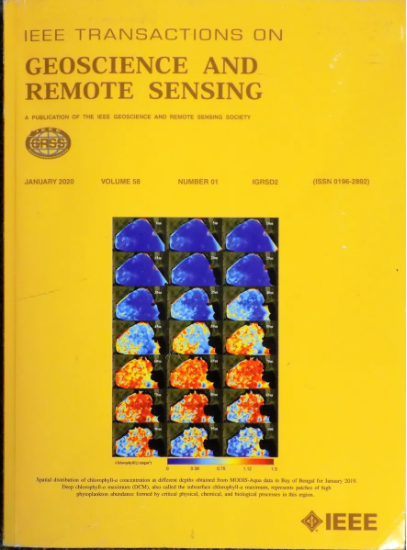基于层次特征融合三重网络的双时遥感图像变化检测
IF 8.6
1区 地球科学
Q1 ENGINEERING, ELECTRICAL & ELECTRONIC
IEEE Transactions on Geoscience and Remote Sensing
Pub Date : 2025-01-06
DOI:10.1109/TGRS.2025.3525811
引用次数: 0
摘要
利用遥感影像实现土地覆盖变化检测(LCCD)是观测地表变化的重要手段。在这种检测中,双时相rsi的光谱反射噪声和成像外部条件的不确定性通常会在结果中产生一些椒盐噪声像素,降低了变化检测的精度。本文提出了一种分层特征融合三重网络(HFTN)来提高具有rsi的LCCD的性能。总体而言,所提出的HFTN旨在通过两种特征学习增强策略和分层特征融合机制来学习代表性特征以提高变化检测性能。首先,提出了一种图像特征差分模型来生成中间分支的输入特征并指导学习性能;其次,提出了一个渐进去噪模块(PDM),并在将特征输入到HFTN的主干之前对每个时间图像进行降噪。最后,提出了一种分层特征融合模块(HFFM)来融合学习到的深度特征,生成变化幅度的图像。此外,在HFTN的主干中采用了多尺度卷积、跨尺度融合和共享权值,进一步提高了特征学习性能。与八种最先进的方法进行了比较,实验结果验证了该方法的可行性和优越性。例如,提出的HFTN在六对真实rsi中实现了大约0.43%-11.83%的总体准确率(OA)和0.11%-4.81%的假警报(FAs)的改进率。代码可以在https://github.com/ImgSciGroup/HFTN-NET.git上获得。本文章由计算机程序翻译,如有差异,请以英文原文为准。
Hierarchical Feature Fusion Triple Network for Change Detection With Bitemporal Remote Sensing Images
Achieving land cover change detection (LCCD) through remotely sensed images (RSIs) is important in the observation of the changes on the Earth’s surface. In such detection, spectral-reflectance noise and the uncertainty of the imaging external conditions for the bitemporal RSIs usually cause some salt-and-pepper noisy pixels in the results and reduce the change detection accuracy. In this article, a hierarchical feature-fusion triple network (HFTN) is proposed to improve the performance of LCCD with RSIs. Overall, the proposed HFTN aims to learn representative features to improve change detection performance via two feature learning enhancement strategies and a hierarchical feature-fusion mechanism. First, an image feature difference model is proposed to generate the input feature for the middle branch and guide the learning performance. Second, a progressive denoising module (PDM) is proposed and applied to each temporal image to reduce the noise before feeding the features into the backbone of the proposed HFTN. Finally, a hierarchical feature-fusion module (HFFM) is proposed to fuse the learned deep feature for generating a change-magnitude image. Additionally, multiscale convolution, cross-scale fusion, and a shared weight are adopted in the backbone of the proposed HFTN to further enhance the feature learning performance. Compared with eight state-of-the-art methods, experimental results verified the feasibility and superiority of the proposed HFTN for LCCD with RSIs. For example, the proposed HFTN achieved improvement rates of approximately 0.43%–11.83% for overall accuracy (OA) and 0.11%–4.81% for false alarms (FAs) across six pairs of real RSIs. The code can be available at https://github.com/ImgSciGroup/HFTN-NET.git .
求助全文
通过发布文献求助,成功后即可免费获取论文全文。
去求助
来源期刊

IEEE Transactions on Geoscience and Remote Sensing
工程技术-地球化学与地球物理
CiteScore
11.50
自引率
28.00%
发文量
1912
审稿时长
4.0 months
期刊介绍:
IEEE Transactions on Geoscience and Remote Sensing (TGRS) is a monthly publication that focuses on the theory, concepts, and techniques of science and engineering as applied to sensing the land, oceans, atmosphere, and space; and the processing, interpretation, and dissemination of this information.
 求助内容:
求助内容: 应助结果提醒方式:
应助结果提醒方式:


